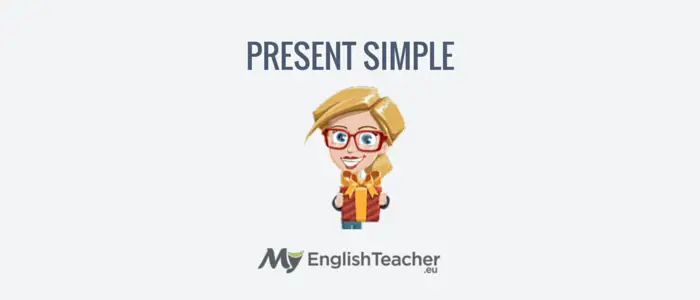
First, let’s learn how to form Simple Present.
VERB + s/es in 3d person singular (ONLY in 3d person singular)
For example,
- You speak English.
- She speaks English. (3d person singular)
- They speak English.
- He speaks English. (3d person singular)
In Simple Present when you want to ask questions, you have to use auxiliary verbs such as DO and DOES (3d person singular).
[Tweet “In Simple Present when you want to ask questions, you have to use auxiliary verbs such as DO and DOES”]
For example,
- Do you speak English?
- Does she speak English?
The answers to these questions will also require the use of auxiliary verbs DO and DOES.
- Do you speak English? Yes, I do/No, I don’t.
- Does she speak English? Yes, she does/No, she doesn’t.
Read more:
12 (All) English Tenses with Examples
When do we use Simple Present?
1. Repeated Action.
We use Simple Present to express that the action is repeated or usual.
[Tweet “We use Simple Present to express that the action is repeated or usual.”]
For example,
- I play tennis.
- She goes for a run every day.
- They always forget to close the door.
- Does he play tennis?
2. Generalizations and Facts
Simple Present is used to express something that is generally true. It is also used to indicate that the person is sure that the fact is true now, was true before, and will be true in the future. It’s not important if the person is wrong.
For example,
- Hong Kong is a small city. (not important that it’s not true)
- Chicago is in America.
- Cats like milk. (generally true)
- She is the most beautiful woman in the world.
3. Future Timetables
We use Simple Present when we talk about a scheduled event in the near future.
[Tweet “We use Simple Present when we talk about a scheduled event in the near future.”]
For example,
- Our train leaves at 9 am this morning.
- The party starts at 5pm.
4. Non-continuous verbs.
Simple Present is also used with non-continuous verbs (verb that cannot be used in Present Continuous):
like
love
prefer
know
understand
see
hate
need
want
believe
remember
look
smell
taste
hear
For example,
- I need this pillow right now.
- It smells very nice.
- Do you remember our first kiss?
- She doesn’t know who did it.
Just remember these 4 simple rules, and you won’t have a problem using Simple Present. 😉
1. Repeated Action
2. Generalizations and Facts
3. Future Timetables
4. Non-continuous verbs
Read more:
What’s the difference between Present Perfect Simple and Present Perfect Continuous?
To learn about why the Simple Present tense is used in newspaper headlines, read this post.


























